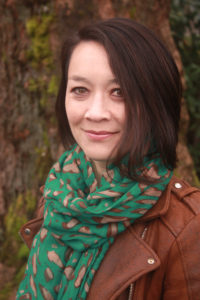
Connecting with Undergrads: Evoking “Homes” in Limbo
In the last few weeks, the undergrads I teach have responded to moving off campus and courses shifting online with a mixture of confusion and sadness. While their generation is well equipped to utilize digital resources, the sudden dismantling of our daily community and rhythms deeply challenged all of us. I have been grateful to find that course content and online strategies have permitted us to connect with and support one another in the uncertain, liminal space of seated courses forced into online venues.
By fortunate coincidence, my GenEd class on the Psalms was scheduled to discuss post-exilic psalms during our first week of online instruction. Through theological engagement with Georg Simmel’s essay “The Stranger” and Catherine Brun and Anita Fábos’ article “Making Homes in Limbo? A Conceptual Framework,” it was my goal that my students develop a greater understanding of the human experience of migratory displacement—and ultimately respond to that understanding with empathy and action.[1] In previous semesters of this course, some students found relating to migrants a foreign idea; this term, however, found us in the midst of a very productive and personal conversation around the concept of “home,” as students grappled with their own recent experiences of displacement and isolation. Not only did I witness students thinking through course materials in a more committed manner than usual, but I also emerged from this week feeling like I know my students individually and collectively much better. In this way, current circumstances and the shift online have been gifts that enrichen the connection this class had already established in person.
Here are some specific strategies that I found facilitated connection for my undergraduates this past week:
- Building on in-person connection: I created discussion groups composed of students who had regularly gravitated to one another in the seated classroom. We utilized these discussion groups in directed discussion forums and for Zoom breakout room exercises. Students provided feedback that interaction with known peers helped motivate them to complete work, and encouraged them to support one another. While I do like to mix up discussion groups from time to time, current shifting circumstances have made it valuable to spend time in the presence of trustworthy and familiar faces.
- Developing new collaborative projects: In conjunction with some individual assignments, I found that my students responded positively when we used the Zoom breakout room time for them to collaboratively craft responses to discussion questions in a shared GoogleDoc. The process of creating a shared product helped them to focus this time and consider together how they might reflect their individual viewpoints in the document. When I briefly dropped into each group, I was able to answer individual questions regarding execution of the assignment and to discuss some of the content that was on their minds. In addition to this synchronous collaboration, I found it effective to have students respond to digital “presentations” asynchronously in their end-of-the-week reflections. Earlier in the week, presenters had posted their creative renderings of selected psalms to class forums, and in students’ individual reflections at the end of the week, I asked them to explain how they connected those presentations to the week’s readings and discussion. By referring to their peers’ creative projects, it gave the sense that students were interacting with each other’s thoughts while processing the course materials.
- Applying course learning to present experiences: The final piece of their individual weekly reflections was to relate the discussion of displacement and “home” to their current experiences in self-isolation. While they had been connecting to the material throughout the week through the readings, video lecture, presentations, and Zoom discussion, most of them went above and beyond the requirements of this reflection because they wanted to work through their present experiences. They demonstrated an ability to empathize (yes!) with the idea of “Homes in Limbo” from the Brun and Fábos article, and shared with me about their lives in ways they hadn’t before. I believe they felt supported simply because I asked them how they are thinking about “home” during this time—and I was honored by the raw and open responses they provided.
As we look to not only convey information through online education, but also to continue forming students theologically, I wonder how else we might creatively connect with our students in the midst of these unique circumstances. Even if our methods are not perfect, the students certainly appreciate any efforts on our parts to see them, hear them, and respond to them. I hope I can continue to share with my students how they are transforming me, as a teacher and as a person, while we go forward into this liminal space together.
[1] Simmel, “Der Fremde”; Brun and Fábos, “Making Homes in Limbo? A Conceptual Framework.”
Leave a Reply